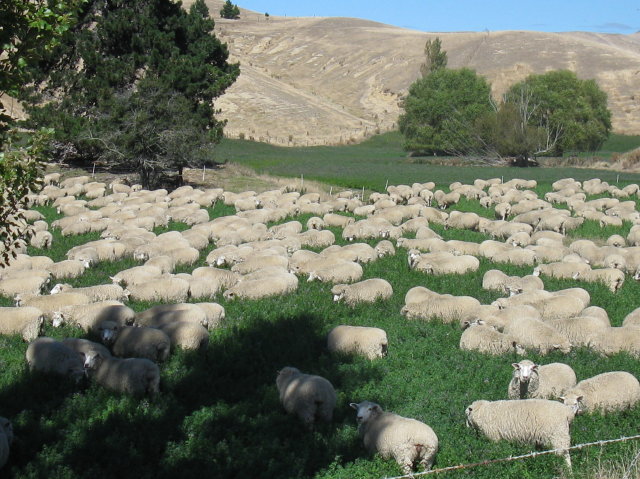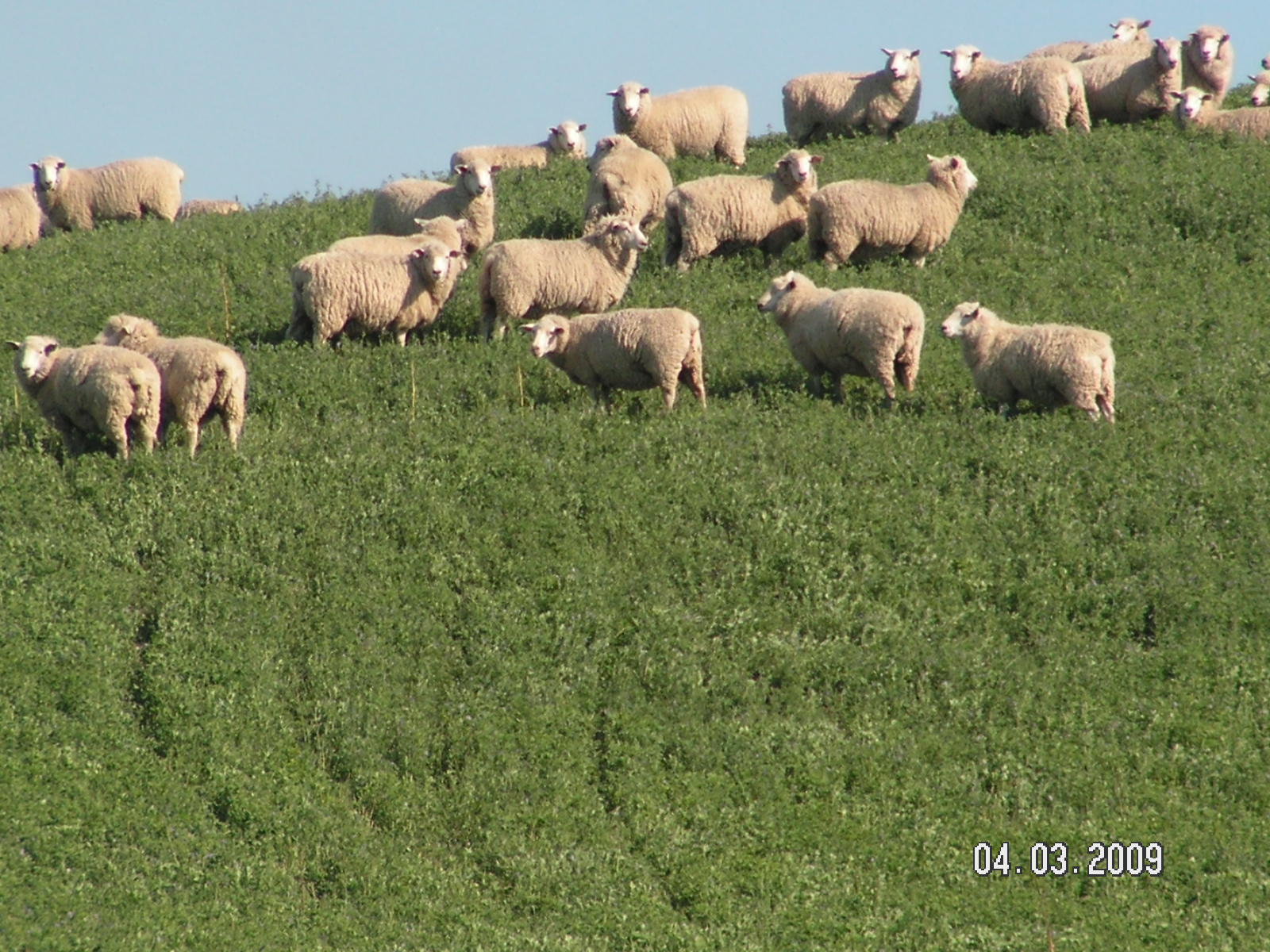Posted on behalf of Dr Derrick Moot (Professor of Plant Science, Lincoln University)
UPDATED: 28/2/2017
One of our most frequently asked questions at this time of year is “Can I use my lucerne for ewe/hogget mating?” so we thought it was timely to post some information so you can make an informed decision:
As always it depends. There are several farmers routinely mating all of their stock (ewes and hoggets’) on lucerne and others who report depressed scanning and lambing rates after doing so. There are also contradictory results in the published literature dating back about 60 years. However, over time, these studies have increased our understanding of what happens and why.
It is important to understand why the answer is Yes and No.

Lucerne that is fresh, young, leafy and free of insects (especially aphids) or leaf diseases has been used successfully to flush on. Equally, in the grips of a major drought with only dry grass available, wilting lucerne has also been used with success. Stock that are not used to lucerne may experience a period of adjustment while their rumens adapt to the change in feed source (similar to being moved onto a brassica) so consider this in the flushing period. Hopefully ewes coming off grazing lucerne have higher body condition which usually translates into higher scanning and lambing percentages.
A couple of things to check before releasing the ewes/hoggets:
Don’t use lucerne that has signs of fungal attack on leaf or stems. Fungal attack after dull wet weather has caused high levels of coumestrans (phyto-oestrogenic compounds) which can suppress ovulation rates. Levels rose in both vegetative and reproductive lucerne after rain. Avoid flushing on such herbage or remove animals at least two weeks before the start of mating. Hoggets appear to have shown a greater reduction in ovulation than mixed aged ewes. Where there are signs of fungal damage in lucerne stands some planning ahead is needed to reduce any potential effects on reproductive stock classes. A couple of options to are:
- If you have alternative feed available flush on that and use the lucerne for a different stock class (e.g. ram lambs, wethers, bull beef). They won’t be affected as the compound only interferes with the female reproductive cycle.
- If no other feed is available, use the freshest youngest lucerne during mating. Any negative effects on ovulation of high oestrogens are gone after 3-4 weeks of grazing other pastures and are not permanent.
- Allow stands to flower either well before (January/February) or allow a long period of growth after mating so lucerne root reserves are replenished.

Don’t use lucerne stands contaminated by aphids or leaf diseases. Lucerne stands produce coumestrans as a defence mechanism against pest and disease attack. Sheep eating contaminated stands ingest the coumestran formed by the plant and the ovulation rate slows resulting in fewer lambs which impacts on next years income. If aphid levels are building up in autumn spray them prior to flushing so the plant doesn’t produce coumestrol to defend itself. (…and remember to check both sides of the leaves in the paddock because you won’t be able to see the wee blighters or leaf spots from the cab of the ute on the other side of the fence…).
Basic rules for flushing/mating on lucerne
- If grazing lucerne fungal infected lucerne remove ewes 2 weeks before mating and move to a non-coumestrol containing pasture (i.e. move from lucerne to a grass pasture or green feed forage crop).
- Flushing on fresh, leafy, lucerne regrowth will increase body weight and is unlikely to reduce ovulation rates.
- If you have no other feed because of drought the extra condition gained by grazing lucerne is likely to outweigh any negative effects of depressed ovulation.
Further information on the impacts of grazing fungal infected lucerne can be found HERE.
